The Leo Frank case: why Atlanta residents lynched a Jewish engineer
Categories: History | North America | Society
By Pictolic https://pictolic.com/article/the-leo-frank-case-why-atlanta-residents-lynched-a-jewish-engineer.htmlLate in the evening of August 17, 1915, hundreds of Atlanta residents filled the streets of the small town of Milledgeville. They traveled a long way of almost 100 miles for a reason - they had rifles and revolvers in their hands. The crowd headed to the local prison and, after a brief skirmish with guards, broke into the building. One man was taken from the prison hospital, who was thrown over the horse's croup and taken towards Marietta, a suburb of Atlanta. There, on the outskirts, the crowd hanged a man from a tree and went home with a clear conscience.
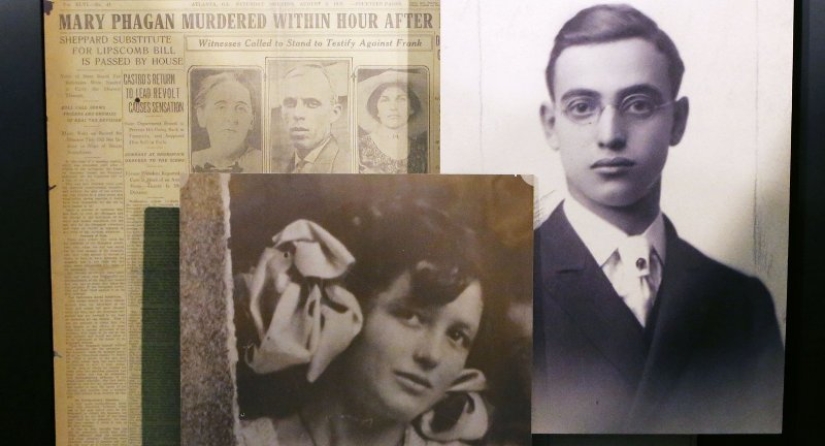
Thus ended the life of Leo Max Frank, the richest resident of Atlanta, a businessman and an active member of the city’s Jewish community. Frank, 29, a graduate of Cornell University, a lover of opera and bridge, was the manager of a pencil factory. His company employed mainly children 13-15 years old, whose working day lasted 13 hours, with a six-day working week.
Max Frank was the chairman of the local branch of the Jewish organization B'nai B'rith. His wife, Lucille Zelig, is the daughter of one of the most influential people in the United States, whose ancestors founded the first synagogue in the southern states. All this did not prevent him from ending up in a noose at the behest of angry townspeople and farmers.

Leo Frank was born in 1884 into a family of Jewish migrants from Germany in Paris. This was not at all the Paris you thought about. We are talking about a small town in Texas, which was once given such a pretentious name by settlers to the West. When Leo was still a child, his family moved to New York. After school, he graduated from the prestigious Cornell University and received a degree in mechanical engineering.
Uncle Leo owned the National Pencil Factory in Atlanta and one day invited his nephew to the position of manager of the enterprise. Frank quickly got up to speed and began to successfully manage the business entrusted to him. Soon he married a girl from a wealthy family, Lucille Zelig. His life was a true embodiment of success - by the age of 29, Frank had gained financial stability, respect in society and was elected chairman of the Jewish society B'nai B'rith.
Everything collapsed in one day. On the morning of April 27, 1913, the body of a child was found in the basement of a pencil factory. It was 13-year-old worker Mary Fagan. The girl was busy attaching erasers to pencils. Police doctors determined that she had been beaten, raped and strangled with a rope.
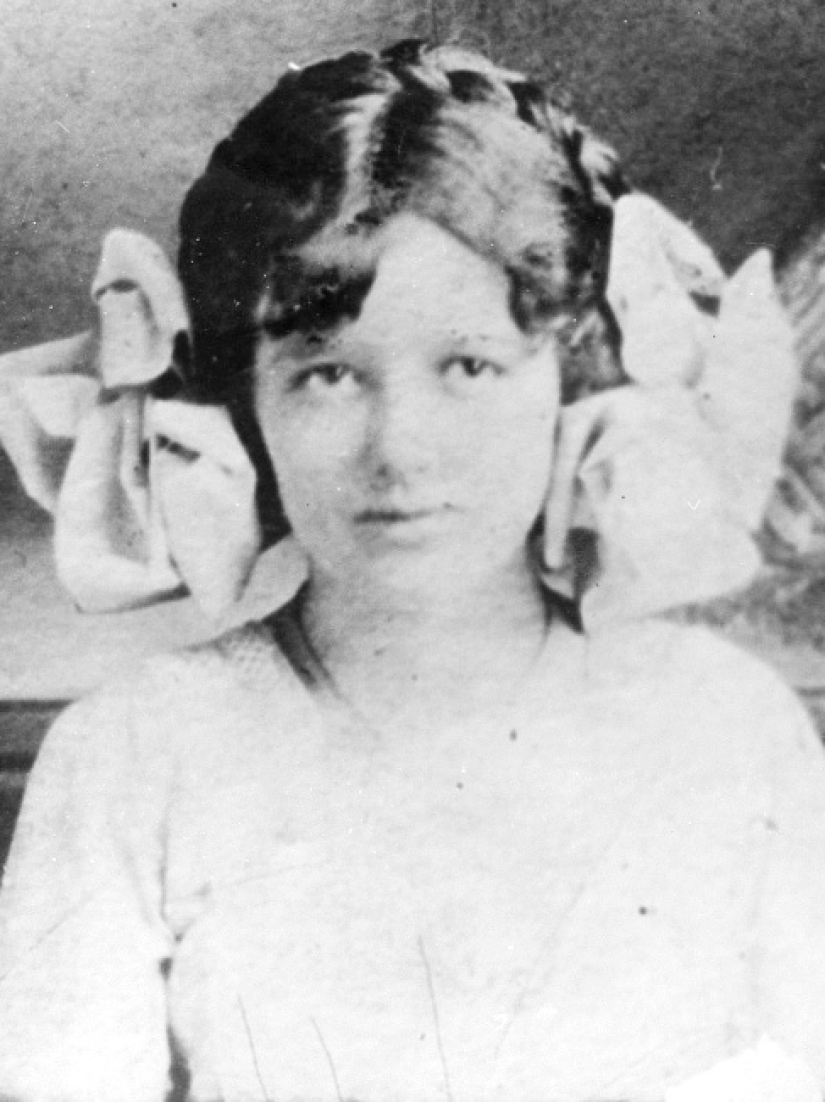
The suspects included three people who were at the factory on the night of the murder. They were Leo Frank, black doorman Jim Conley and night watchman Newt Lee. Of the three, only one person had an alibi. Watchman Li, who found the body, according to the factory movement map, could not have been at the crime scene at night.
A note written in Jim Conley's handwriting was found next to the body. The gatekeeper told investigators that he wrote it under Frank's dictation, and then helped the manager move the body from one of the workshop rooms to the basement. There was no reason to believe the dark-skinned guy, and even a bitter drunkard. If not for one circumstance, Conley would have been executed, solving the case in a short time.
That would be the case if the second suspect was a white local guy. But this was about a Jew who came to Atlanta from the north. For southerners, getting Frank indicted became a matter of honor. This was a kind of symbolic revenge for the “humiliated South.” Although the manager was defended by the best lawyers, the jury of 12 did not want to listen to any arguments.
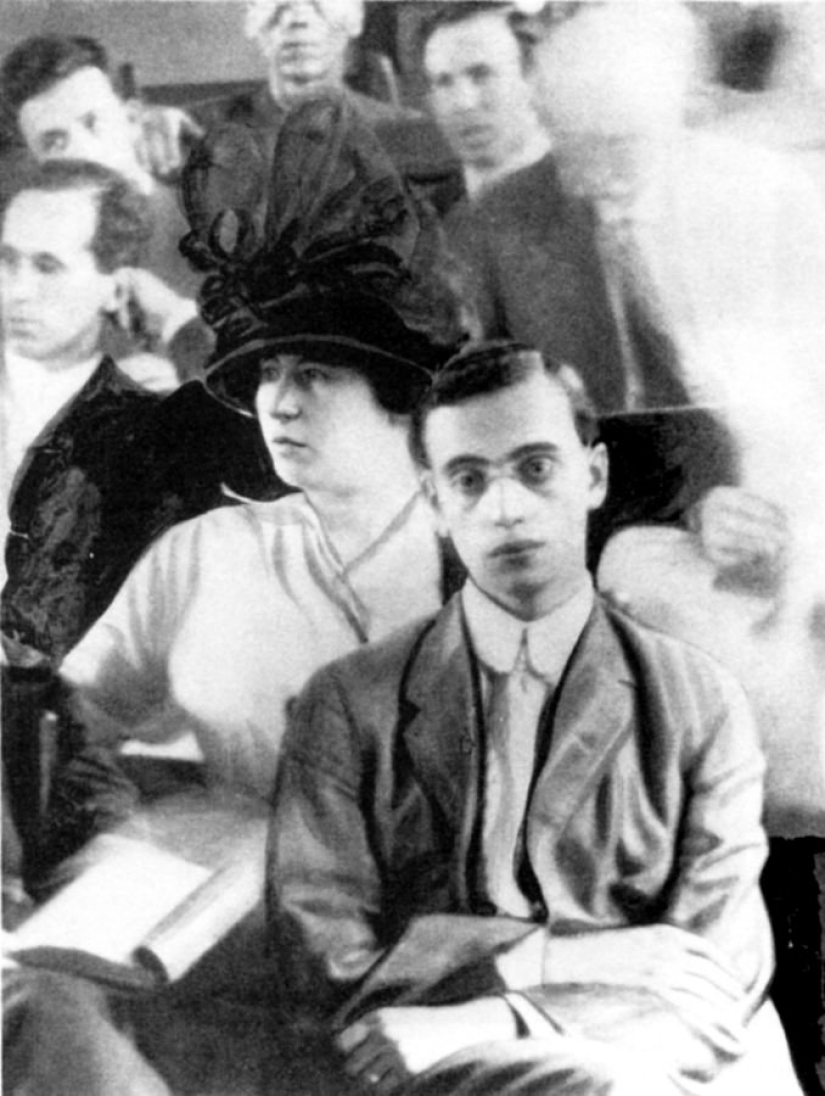
Prosecutor Dorsey tried his best to make Leo Frank a pervert. In the state of Georgia in the early 20th century, this was enough to sentence a person to death, even if he did not commit murder. Over the course of two years, lawyers found 103 procedural errors in the case materials and filed 13 appeals, but all was in vain.
A confession was obtained from Jim Conley's mistress, who claimed that he told her how he had abused a child and committed murder. But the court did not take this into account. Witnesses were pressured, and watchman Newt Lee was even beaten several times so that he would change his testimony.
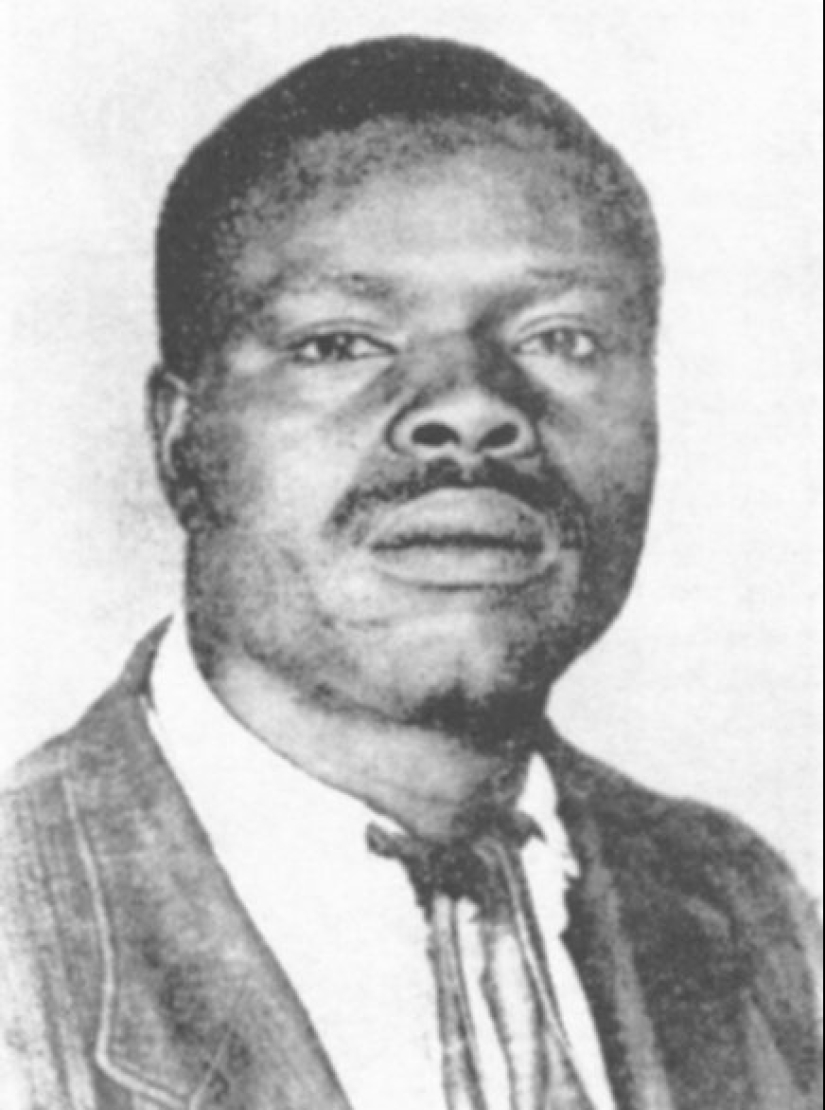
On May 31, 1915, the court convened for the last hearing of the case. Frank's guilt was considered proven and all that remained was to decide whether to sentence him to death or life imprisonment. On the table in front of the jury was a letter from Judge Rowne, who led the case but died suddenly. 67-year-old Rown managed to write an appeal in which he asked not to execute Leo Frank. According to the judge, his guilt was not fully proven.
Leo Frank was sentenced to death, which was scheduled for June 22, 1915. Frank awaited his fate in the Milledgeville prison. Two years of imprisonment seriously undermined the health of the once thriving man and he could barely walk. A day before the execution, Georgia Governor John Slayton commuted the death penalty to life imprisonment. He spoke publicly to citizens, saying that there was not enough evidence in the case for Frank to be executed.
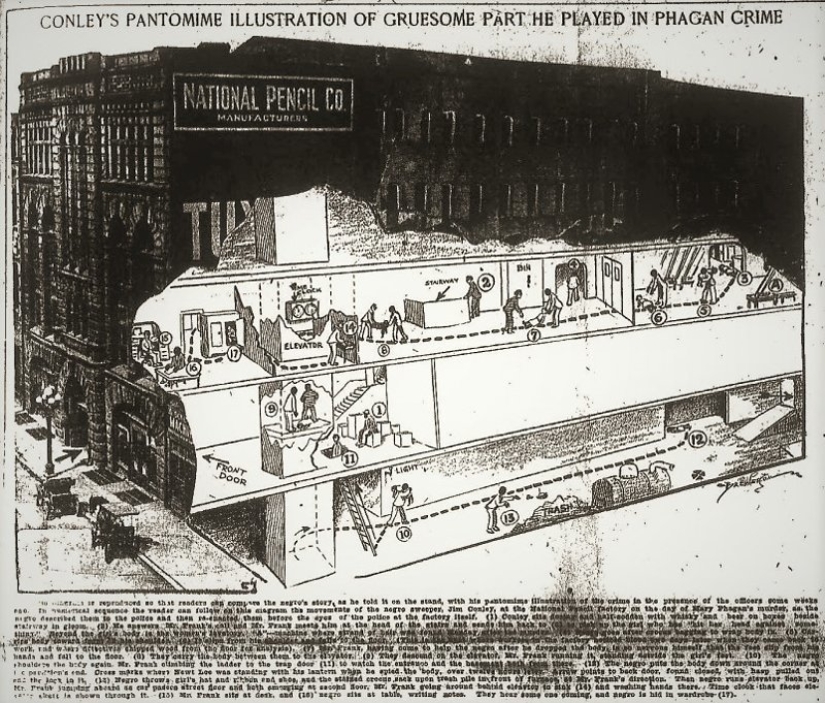
The move cost Slayton his career. After his announcement, he remained in office for only a week. Angry citizens of Atlanta held torchlight processions outside his house every night and smashed windows. The police barely restrained the crowd demanding that the “collaborator of the Jews” be handed over to them. The governor, fearing for his life and wanting to save his family, resigned and secretly fled Atlanta. After this, Jews began to leave the city, fleeing the pogroms.
Leo Frank, being on death row, was also not safe. Four weeks after being transferred to the Milledgeville prison, he was attacked by his cellmate. Convicted of double murder, Crean stole a knife from the prison kitchen and tried to cut Frank's throat that night. He slashed the victim's neck from ear to ear. Despite the fact that the blade hit the jugular vein and began bleeding heavily, Leo managed to survive. His life was saved by another prisoner, by luck a former surgeon.
Frank, barely alive, with his neck bandaged, was transferred to the prison hospital and locked in a separate room. No one hoped that the wounded man would recover. For several weeks Frank was between life and death. Despite his terrible situation, the man maintained his presence of mind and behaved with dignity. He believed that justice would prevail and the real killer would be found.
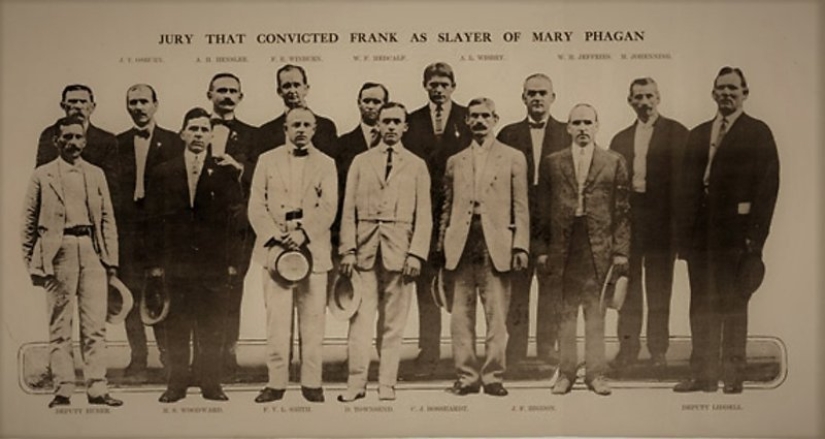
But on the night of August 17, 1915, a crowd of "conscious citizens" of Atlanta, calling themselves the Mary Phagan Knights, arrived at the prison. They cut the telephone wire, knocked down the door and disarmed the guards. Leo Frank was dragged from his bed and driven to Mary Phagan's hometown of Marietta. There in the oak grove everything was ready for the execution.
When the vigilantes put a noose around Frank's neck, they demanded that he confess guilt. But Leo again said that he was not to blame for anything and asked to give the engagement ring to his wife. Soon it was all over and the body of the unfortunate Frank hung on a branch. The young man's death was terrible - when the noose choked, the wound on his neck opened and blood sprayed out in all directions.
The next morning, the place of execution became a real center of pilgrimage. More than 1,000 people gathered in the oak grove, gawking at the body in the noose and taking photographs. Some arrived with their wives and children and held family photo sessions in front of the corpse. Some went even further and began tearing off pieces of Frank's clothing as souvenirs. By lunchtime, a police detachment arrived in the grove and, with some difficulty, took the body away from the crowd.
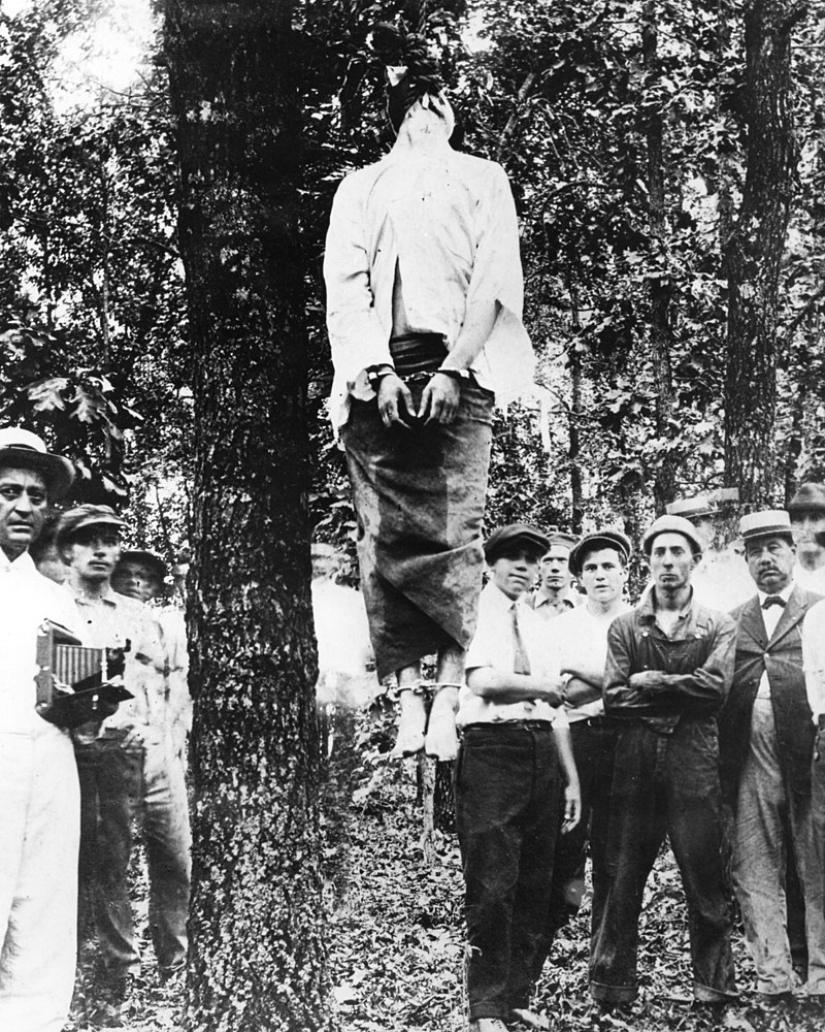
Leo Frank's body was given to his family. He was buried at Mount Carmel Jewish Cemetery in Brooklyn. Lucille Frank survived her husband by four decades. She mourned her husband all her life and never remarried. Gatekeeper Conley, the second suspect, was repeatedly jailed for theft and robbery. He died in 1962, having outlived all the characters in this drama.
In 1983, 82-year-old Alonzo Mann, a former pencil factory worker, made a loud confession. He reported that he saw Jim Conley carrying the girl's body into the basement. The boy, who was only 14 years old, told his mother about this. But she strictly forbade telling this to anyone. In the same year, the court reviewed the case of Leo Frank, and in 1986 he was found not guilty.
Unfortunately, history knows many cases when an innocent person is acquitted after execution.
Recent articles

If it seems to you that the New Year holidays are being celebrated somehow incorrectly, then you definitely haven't seen these ...

While the sun practically disappeared from the sky above the Arctic Circle and the night seemed endless, the Vikings prepared to ...

Sometimes reality presents us with amazing coincidences. Objects blend perfectly into the background, animals become invisible in ...